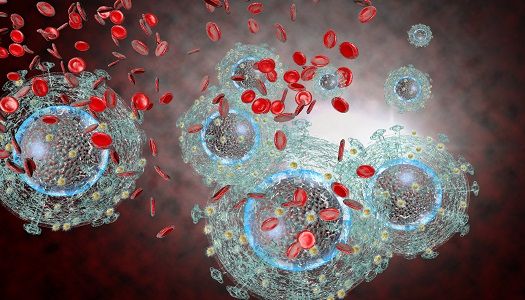Article
The Road to Finding an HIV Cure
Author(s):
With major progress in daily treatments, one expert believes a cure could be a decade away.

Through what may have seem like an improbable path just 2 decades ago, researchers are working towards the goal to completely cure human immunodeficiency virus (HIV).
Though there has been preventative steps laid out and executed since the HIV epidemic began years ago — such as with earlier at-risk testing and pre-exposure prophylaxis — what has brought healthcare professionals closer than ever to an HIV cure is major advances in treatment.
In advancing from combination therapy, multi-drug “cocktail” treatment in the 1990s and 2000s to streamlined modern medication, treatment has been HIV researcher’s biggest success to day, Roger Shapiro, MD, MPH, said.
Shapiro is an associate professor at Harvard School of Public Health in Boston who specializes in reducing the incidence of mother-to-child HIV transmission and reducing morbidity and mortality rates in infants born infected. Though a preventive vaccine remains elusive due to the body’s inefficient immune response to the virus, Shapiro holds praise for a currently effective daily treatment for HIV.
“Because of effective treatment, what was once a universally fatal disease can now be controlled with 1 pill, once a day,” Shapiro said. “Ongoing research is now exploring how to push treatment even further and control the virus with longer-acting treatment or…approaches such as monoclonal antibodies — but we are not there yet.”
Paul Volberding, MD, echoed Shapiro’s praise for treatment advancement. The professor at the School of Medicine of University of California, San Francisco, has been studying and treating HIV for decades. He recalled giving lectures years ago, showing a photo of 2 handfuls of pills that represented the then-standard of treatment regimen.
“The pressure has been on drug developers to make drugs more potent, more convenient, and less toxic,” Volberding said. “One by one, the main side effects [such as diarrhea and nerve damage] have been pretty well controlled. I think there’s a renewed optimism that we can continue to make progress and that we can eventually cure HIV.”
Treatment progression has resulted in a 19% decrease in US HIV diagnoses between 2005 and 2014. However, regions of the world such as sub-Saharan Africa are still deeply inflicted by the virus — more than 25 million residents are diagnosed with HIV, many being children of HIV-positive mothers. The region’s 2015 HIV infections made up two-thirds of the world’s total infection count that year.
On top of the great costs required to reach modern testing and treatment to this greatly affected area, Volberding noted there could be resistance from patients.
“[Certain] people don’t want to be tested,” Volberding said. “Men especially don’t want to be tested. Young people don’t want to take pills.”
Researchers have noted trends in which treated HIV patients can be expected to live about as long as uninfected individuals, with a near-zero risk of transmission to others. Though deaths are rising from cardiovascular disease and cancers in the HIV community, patients must adhere to and maintain their treatment of the virus — they are not actually cured.
Just one individual has achieved a sterilizing HIV cure in history, in which all traces of HIV were permanently removed from the patient’s body. The successful procedure was a bone marrow transplant with a very specific donor. Such success would be impossible in a great majority of HIV patients, though.
“That is a very difficult goal to reach and might not ever be attainable for most,” Anthony Fauci, MD, director of the National Institute of Allergy and Infectious Diseases, said.
The scientific community is instead focused on post-antiretroviral therapy (ART) sustained remission of viremia, Fauci said. The daily pill ART regimen allows HIV patients to suppress the virus with monoclonal antibodies or other agents capable of controlling the infection.
Research is progressing towards getting patients off of ART for as long as possible, Fauci said, with them only returning to it in the case of relapse.
“Some people just get weary of taking medication every day,” Fauci said.
Therapeutic vaccine is also in development as a potential HIV cure. The vaccine is intended to boost the immune system while slowing the progression of the disease. Though it does not yet exist, scientists are developing such a vaccine.
Shapiro expressed hope that these progressions and innovations in treatment will one day lead to a cure.
“There is scientific debate about whether we can ‘treat our way out of the epidemic,’ or treat enough people so that we break the cycle of transmission, and a few large studies are looking at this question right now,” Shapiro said. “It may take a combination of several interventions, [such as] prevention campaigns, community-based testing, linkage to care and treatment, et cetera, and it will certainly take a large funding commitment.”
The “Countdown to a Cure for AIDS” initiative of the American Foundation for AIDS Research expresses a desire to have a cure for HIV by 2020. Volberding believes research is yet another decade away from that goal, though. But even that is only an estimation.
“How long that will be, we don’t know, and how many people will be able to do that, we don’t know,” Volberding said.
Related Coverage
HIV Smokers Twice as Likely to Die from Smoking Than from Disease
Costlier, Riskier Treatment Tests Better For HIV-related Infection Care


